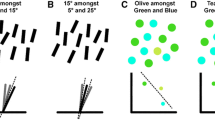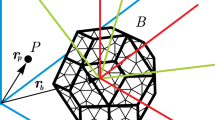Abstract
Organisms orient themselves to a stimulus by two general methods. One method is by directed orientation (taxis); the other is by undirected locomotory reaction (kinesis). An equation, and the methods for finding the necessary parameters of this equation, is derived for the distribution of organisms within a container, with the following limitations: (1) the organisms have no accommodation, (2) they are always active, and (3) the stimulus changes slowly with position. Necessary modifications of the equation are then derived, so that the last two limitations may be eliminated. The equation cannot be solved excatly because of its complexity; hence an approximation method must be used. This method is discussed, an approximate solution is found, and a time constant for equilibrium to be established is derived. Applications tovarious experiments in the literature are then made with fairly satisfactory results. A new interpretation of the theory of klino-kinesis with accommodation is found upon application of the equations developed to experimental work. Further limitations and uses of these equations are then discussed.
Similar content being viewed by others
Literature
Bentley, E. W. 1944. “The Biology and Behaviour of Ptinus Tectus Boie. (Coleoptera, Ptinidae), a Pest of Stored Products. V. Humidity Reactions.”Jour. Exp. Biol.,20, 152–58.
—, D. L. Gunn, and D. W. Ewer. 1941. “The Biology and Behaviour of Ptinus Tectus Boie. (Coleoptera, Ptinidae), a Pest of Stored Products. I. The Daily Rhythm of Locomotory Activity, Especially in Relation to Light and Temperature.”Jour. Exp. Biol.,18, 182–95.
Bursell, E. and D. W. Ewer. 1950. “On the Reactions to Humidity of Peripatopsis Moseleyi (Wood-Mason).”Jour. Exp. Biol.,26, 335–53.
Ewer, D. W. and E. Bursell. 1950. “A Note on the Classification of Elementary Behaviour Patterns.”Behaviour,3, 40–47.
Fraenkel, G. 1931. “Die Mechanik der Orientierung der Tiere im Raum.”Biol. Rev.,6, 36–87.
— and D. L. Gunn. 1940.The Orientation of Animals. Oxford: Oxford University Press.
Gunn, D. L. 1937. “The Humidity Reactions of the Wood-Louse, Porcellio Scaber (Latreille).”Jour. Exp. Biol.,14, 178–86.
— and H. S. Hopf. 1942. “The Biology and Behaviour of Ptinus Tectus Boie. (Coleoptera, Ptinidae), a Pest of Stored Products. II. The Amount of Locomotory Activity in Relation to Experimental and to Previous Temperatures.”Jour. Exp. Biol.,18, 278–89.
— and J. S. Kennedy. 1936. “Apparatus for Investigating the Reactions of Land Arthropods to Humidity.”Jour. Exp. Biol.,13, 450–59.
—, J. S. Kennedy, and D. P. Pielou. 1937. “Classification of Taxes and Kineses.”Nature,140, 1064.
— and D. P. Pielou. 1940. “The Humidity Behaviour of the Mealworm Beetle, Tenebrio Molitor L. III. The Mechanism of the Reaction.”Jour. Exp. Biol.,17, 307–16.
— and B. M. Walshe. 1942. “The Biology and Behaviour of Ptinus Tectus Boie. (Coleoptera, Ptinidae), a Pest of Stored Products. IV. Temperature Preference.”Jour. Exp. Biol.,19, 133–40.
Jennings, H. S. 1904.Contributions to the Study of the Behavior of Lower Organisms. Washington, D.C.: Carnegie Institute.
— 1906.Behavior of the Lower Organisms. New York: Macmillan Co.
Kennedy, J. S. 1937. “The Humidity Reactions of the African Migratory Locust, Locusta Migratoria Migratorioides R. and F., Gregarious Phase.”Jour. Exp. Biol.,14, 187–97.
Lees, A. D. 1943. “On the Behavior of Wireworms of the Genus Agriotes Esch. (Coleoptera, Elasteridae). I. Reactions to Humidity.”Jour. Exp. Biol.,20, 43–53.
— 1948. “The Sensory Physiology of the Sheep Tick Ixodes Ricinus L.”Jour. Exp. Biol.,25, 145–207.
Mast, S. O. 1911.Light and the Behavior of Organisms. New York: John Wiley and Sons.
— 1938. “Factors Involved in the Process of Orientation of Lower Organisms in Light.”Biol. Rev.,13, 186–224.
Patlak, C. S. 1952. “Random Walk with Persistence and External Bias.”Bull. Math. Biophysics,15, 311–38.
Pielou, D. P. and D. L. Gunn. 1940. “The Humidity Behaviour of the Mealworm Beetle, Tenebrio Molitor L. I. The Reaction to Differences of Humidity.”Jour. Exp. Biol.,17, 286–94.
Rashevsky, N. 1948.Mathematical Biophysics. Rev. Ed. Chicago: University of Chicago Press.
Thorpe, W. H., A. C. Crombie, R. Hill, and J. H. Darrah. 1947. “The Behavior of Wireworms in Response to Chemical Stimulation.”Jour. Exp. Biol.,23, 234–66.
Ullyott, P. 1936. “The Behavior of Dendrocoelum Lacteum. II. Responses in Non-Directional Gradients.”Jour. Exp. Biol.,13, 265–78.
Waloff, N. 1941. “The Mechanisms of Humidity Reactions of Terrestrial Isopods.”Jour. Exp. Biol.,18, 115–35.
Wigglesworth, V. B. 1941. “The Sensory Physiology of the Human Louse Pediculus Humanus Corporis de Geer (Anoplura).”Parasitology,33, 67–109.
Author information
Authors and Affiliations
Additional information
This work was done while the author was Public Health Service Research Fellow of The National Institute of Mental Halth, Federal Security Agency.
Rights and permissions
About this article
Cite this article
Patlak, C.S. A mathematical contribution to the study of orientation of organisms. Bulletin of Mathematical Biophysics 15, 431–476 (1953). https://doi.org/10.1007/BF02476435
Received:
Issue Date:
DOI: https://doi.org/10.1007/BF02476435




